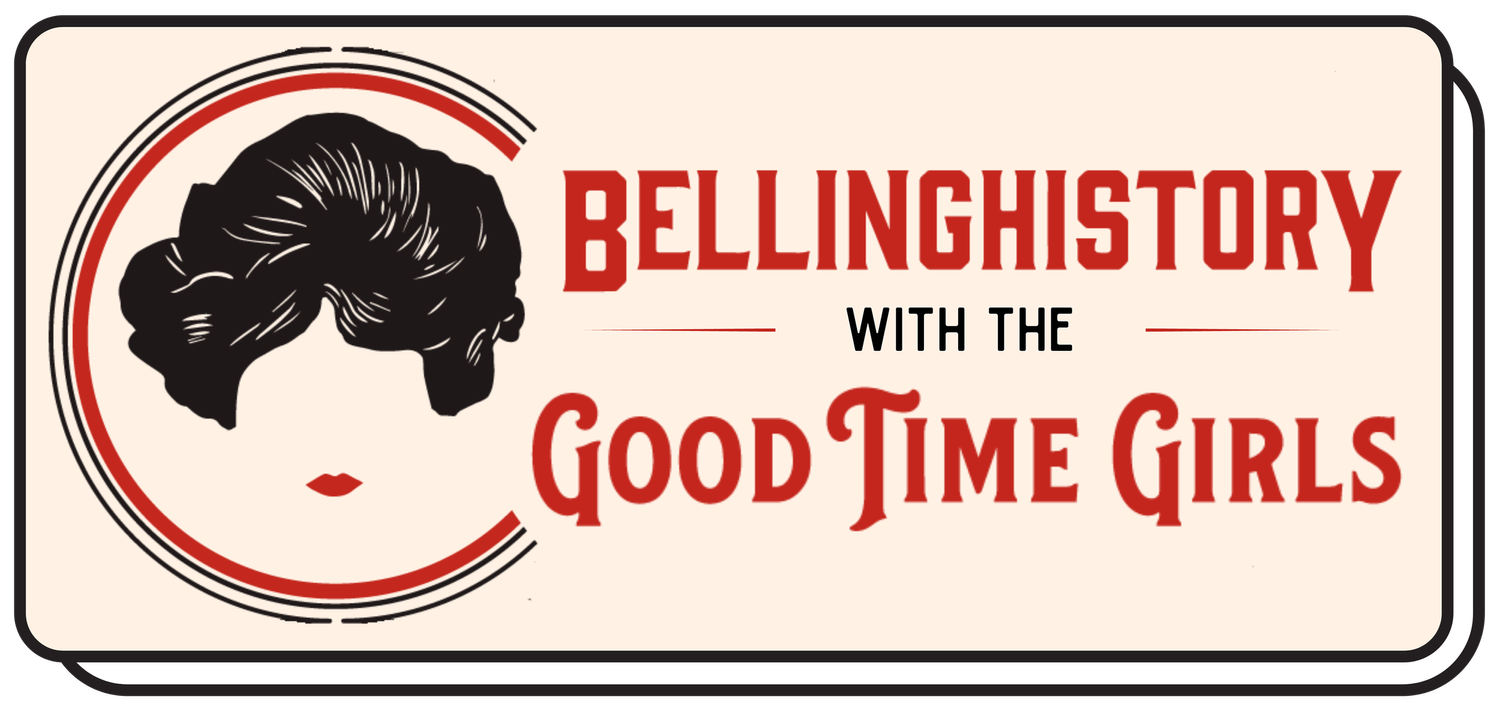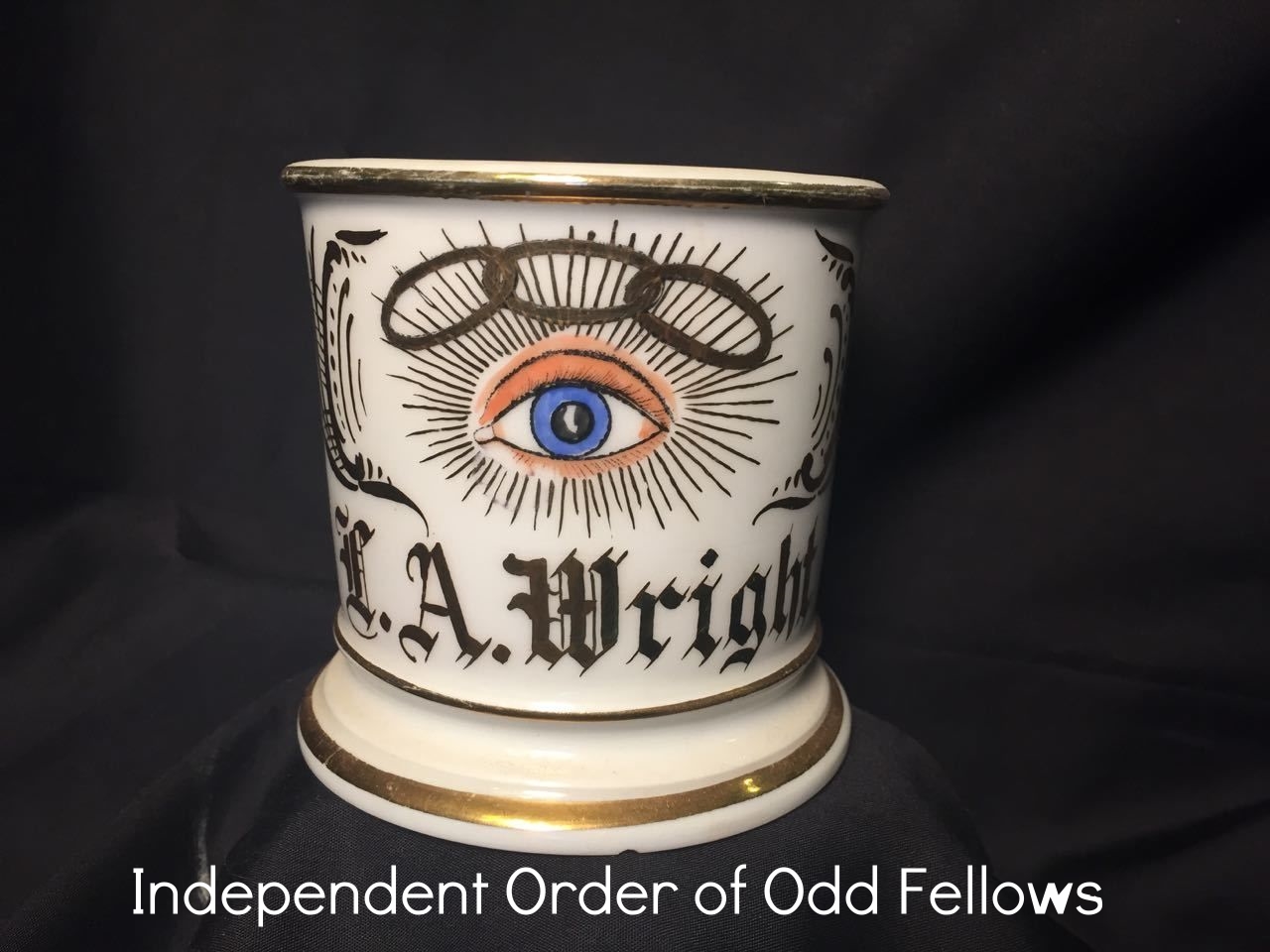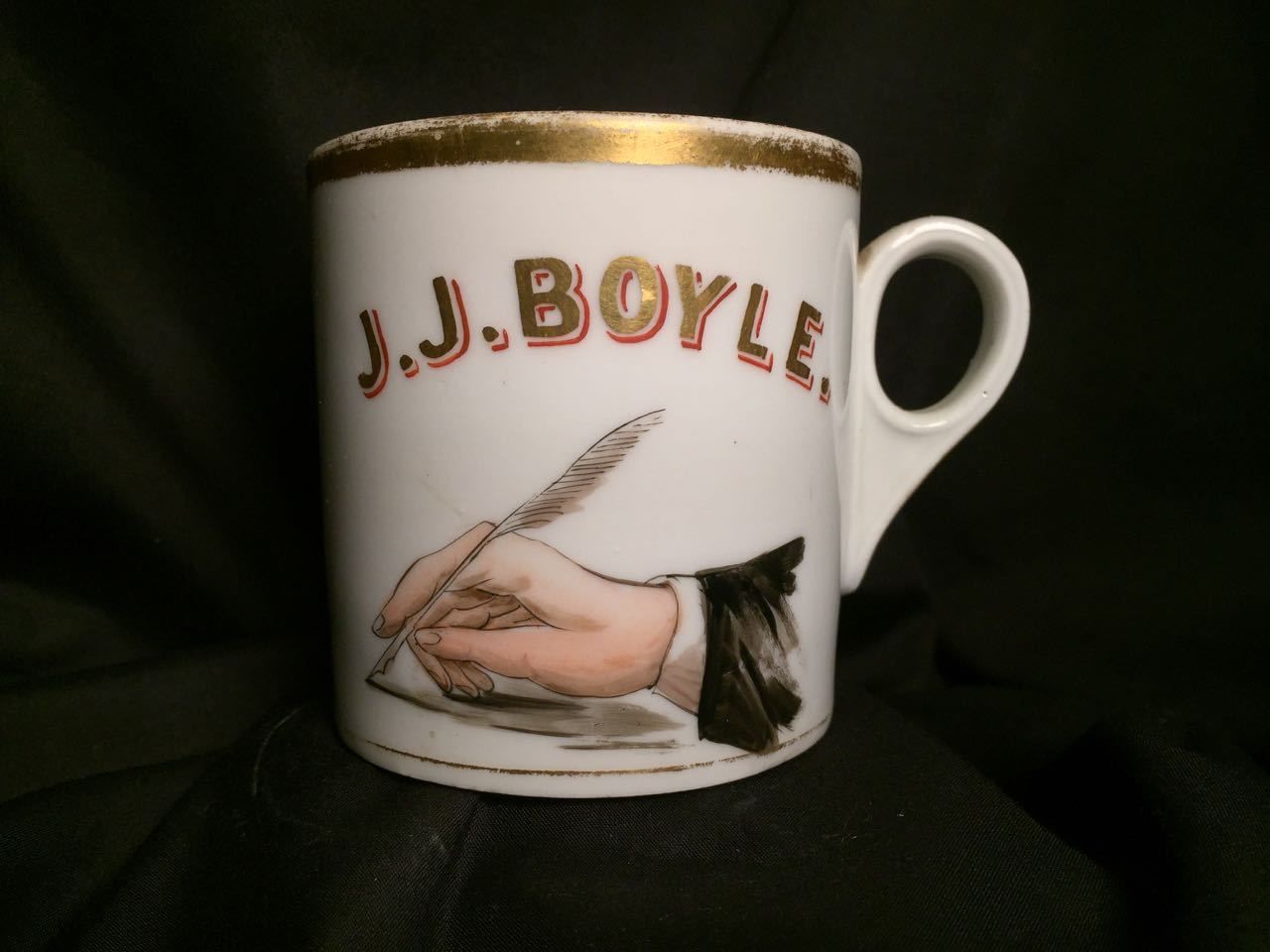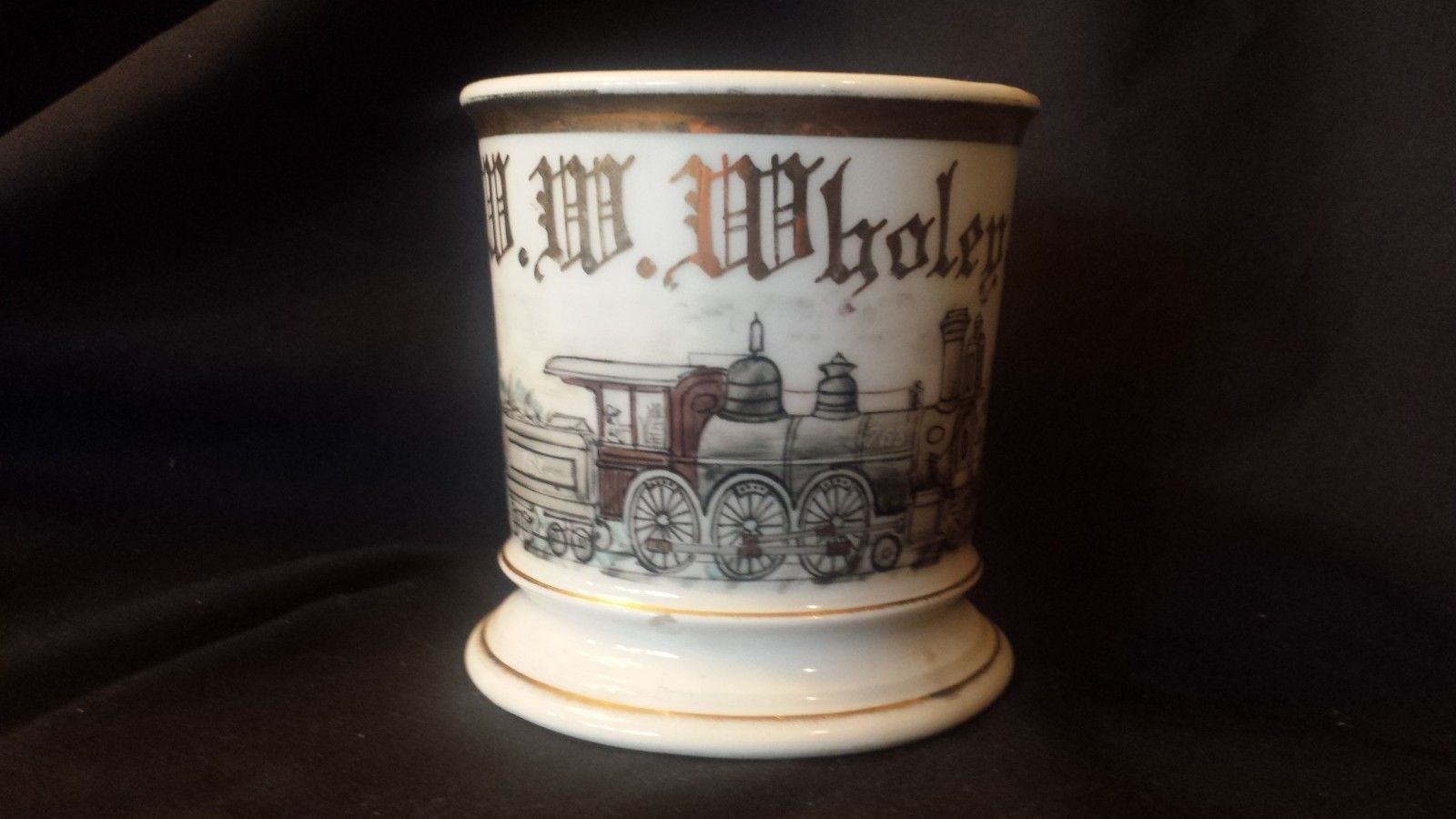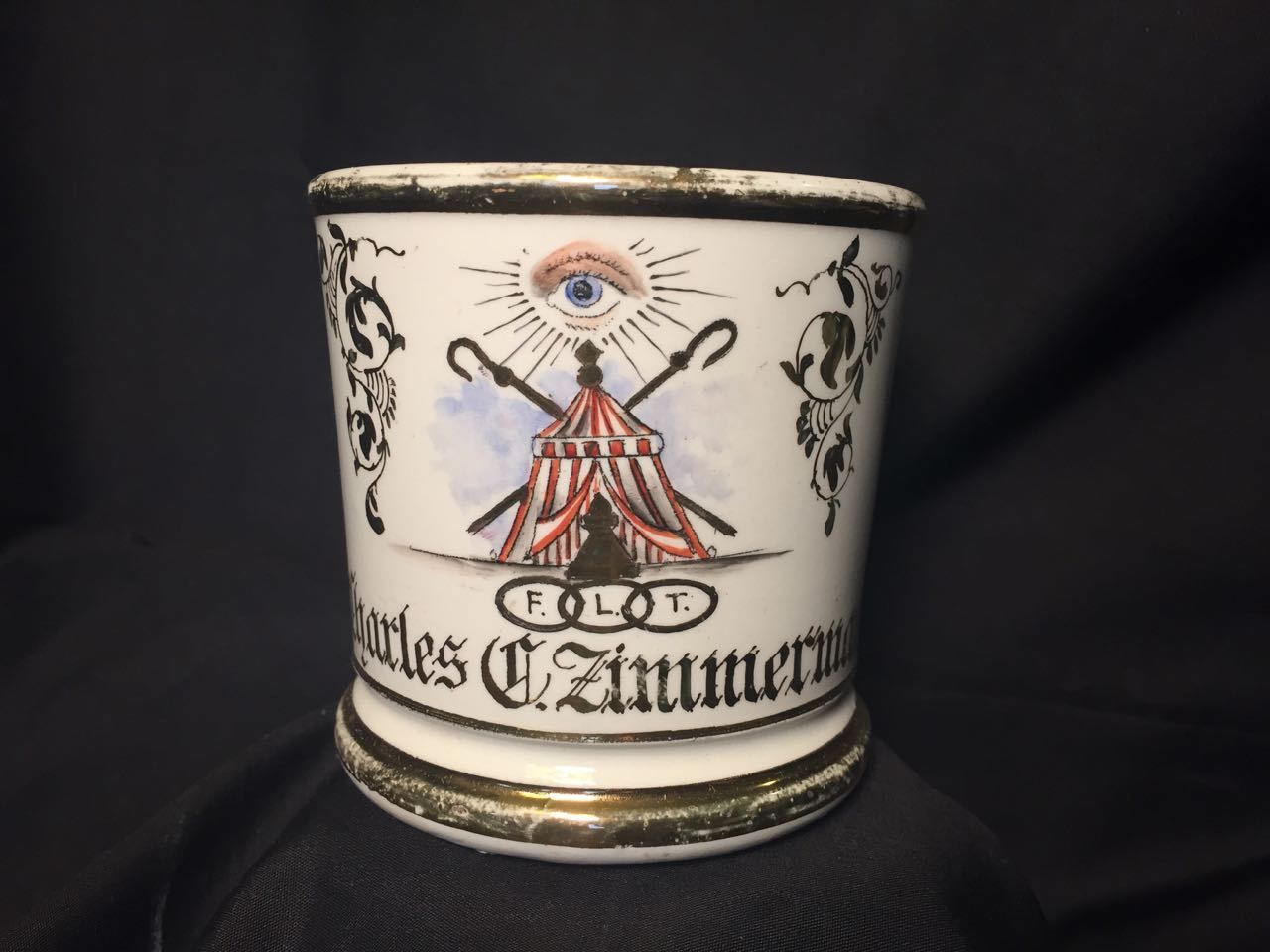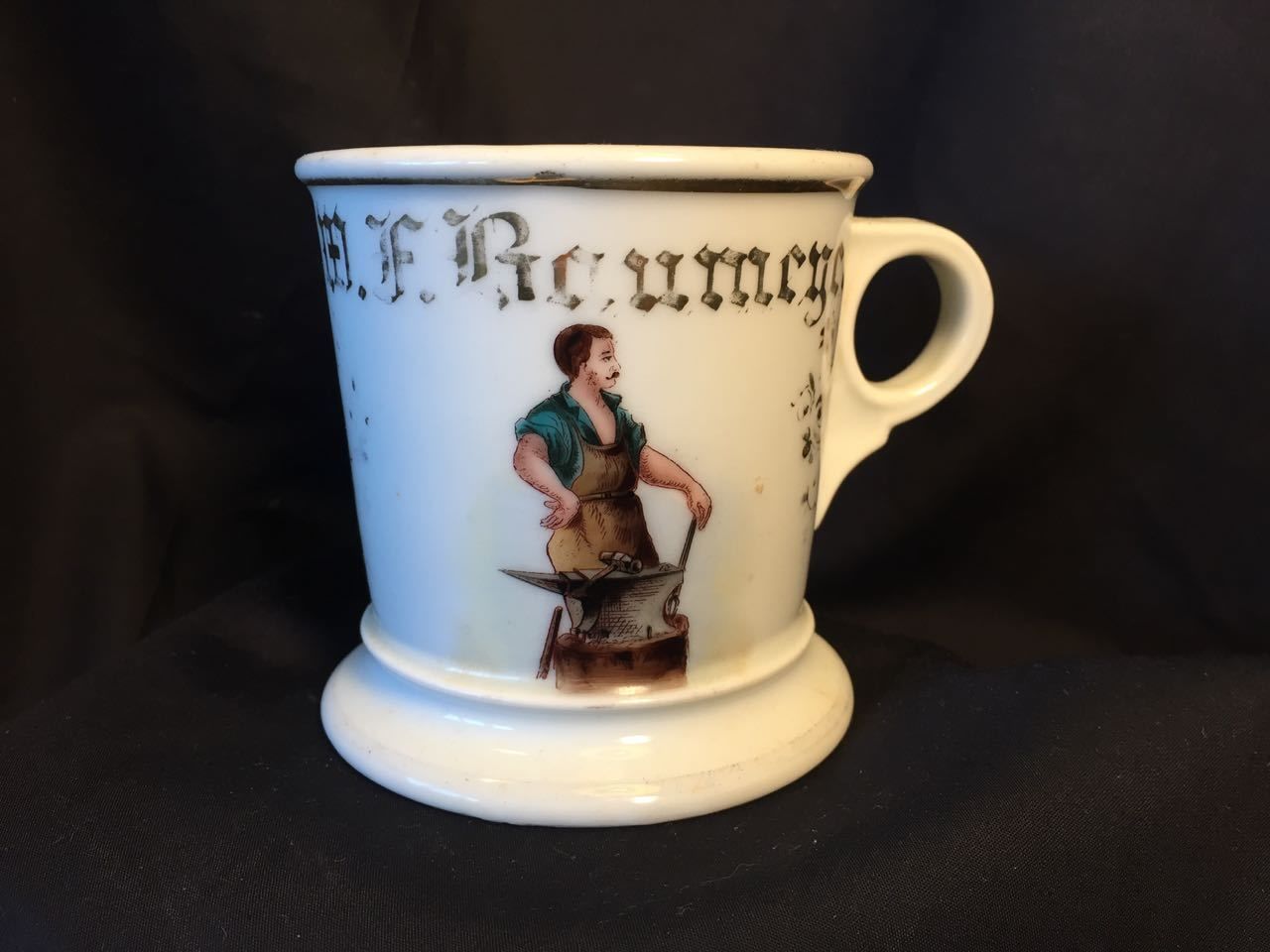For a Limited Time: Fraternal & Occupational Shaving Mugs at The Bureau
History:
A uniquely American phenomenon, fraternal and occupational shaving mugs were used by members of secret societies, fraternities and lodges from the 1880s to the 1930s . Mugs could be purchased and personalized at barber supply stores or barber shops --where they were kept. Special shelves lined the walls of barber shops to display regulars’ mugs. Men of higher status (judges, politicians, successful business men) were often afforded the most opulently decorated mugs.
What Do Shaving Mugs Have To Do With The Bureau?
Throughout the 1930s the address currently maintained by The Bureau of Historical Investigation was the Blick Barber & Beauty Supply store where shaving mugs were sold.
The mugs we carry are from a local man’s collection amassed over his lifetime. They have been valued based on a range of criteria which is described below.
Shaving Mugs are Highly Collectible, What Affects Their Value?
Which Fraternal Order or Occupation is depicted on the mug?
Different organizations (The Freemasons, The Oddfellows, The Elks) go in and out of fashion. Others have a few influential enthusiasts who drive up the value of certain mugs by buying all of one organization’s mugs that they can.
The same is true for different occupations.
Do we know anything about the person who owned the mug?
Were they of relative stature in their community?
Are there any anecdotes that we can tell about the owner that can be corroborated with historical evidence?
Structural Conditions
Is the handle still attached? A detached or missing handle can really reduce the value of a mug.
Are there chips, cracks or repairs? These things are less of an issue for price but are still considered when deciding upon the ultimate value of a mug.
Aesthetic Condition
Is the gilt (traditional gold detail on the brim and base) in good condition? Wear on the gilt actually shows that the mug was used quite a bit and some collectors prefer a more worn appearance to very shiny and unused looking gilt.
Is the painted image in good condition?
Imagery
How unique is the subject matter? The more uncommon, the better. Unless it is a train. People love trains.
How many people are depicted? The more the better.
Was the painting done skillfully? Shoddy craftsmanship drives down the price.
These little cups of history are available for a limited time at The Bureau. Even if you aren't in the market for one, the small collection is a marvel to behold and certainly worth a trip to the shop!
